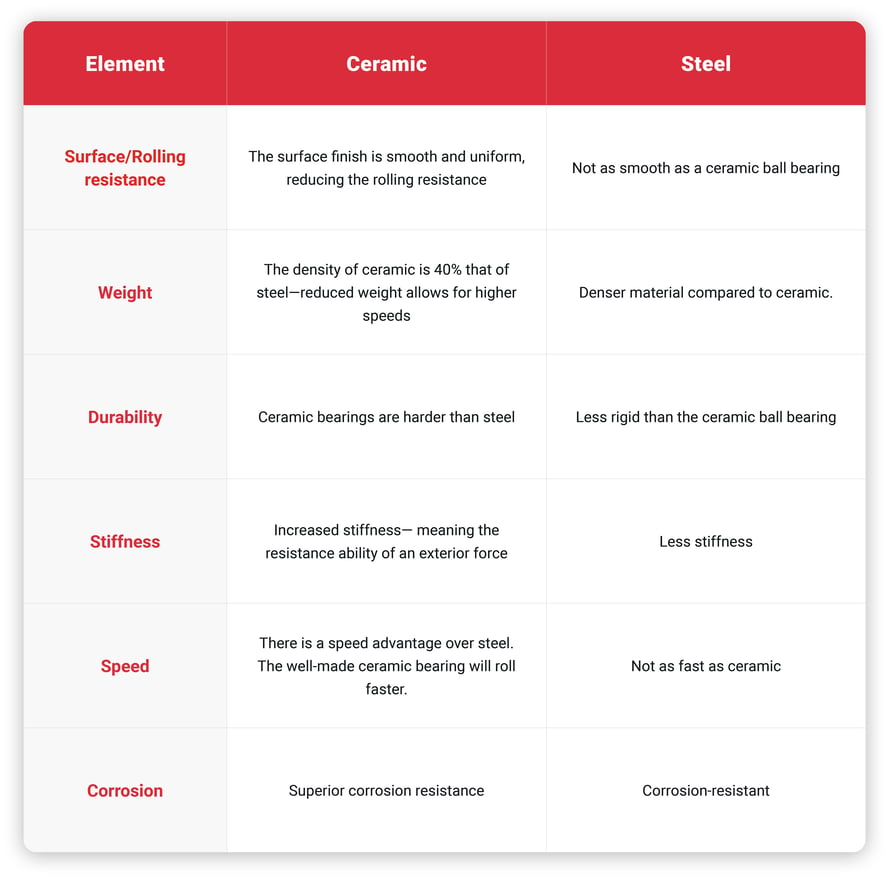There are several types of bearings on the market today—each used for a specific purpose and design.
Bearings are designed to carry distinct load types, radial or thrust. Ball bearings are a common type of rolling-element bearing that uses balls to separate the moving parts.
In addition, ceramic bearings are comprised of ceramic rolling elements (balls) enclosed in a ferrous (typically steel) inner and outer race. They are superior to steel balls in many ways.
Understanding the difference in the two bearing types and which is needed for specific applications is essential when trying to source suppliers.
At Bearings Manufacturing Company, we’re committed to providing a modified and manufactured ball and roller bearing product, focusing on supporting on-time deliveries while meeting or exceeding customers’ product expectations.
Please keep reading for more information about ceramic ball bearings, the applications and industries that use them, the comparison between steel and ceramic bearings, and how BMC can change out steel ball bearings and replace them with ceramic. (if that’s what you need)!
Why are Ceramic Ball Bearings Essential?
Advancements in industrial applications and technologies require dependable machinery to keep up with the times. Standard bearings are not as reliable in extreme conditions or unique environments.
Ceramic bearings are built for high speeds, longer life, extreme temperatures, resistance to acid, alkali, and salt, and more.
Comparison Ceramic Ball Bearings versus Steel Ball Bearings

Key Takeaways...
- Reduced rolling resistance - the surface finish of the ceramic bearings are smooth and uniform
- Reduced weight compared to steel bearings which enhance overall performance
- Increased durability - ceramic bearings are harder than steel, making them more durable
- Increased stiffness - which means the ceramic balls will deflect less under load.
- Speed - Manufacturers value ceramic bearings because of their speed advantage over their steel counterparts.
Ceramic Bearing Applications
The ceramic bearing has found uses in industrial applications where there is a need for:
- high speed
- high load
- high temperature
Any application that requires higher speeds, lower friction, and longer life are ideal for ceramic hybrid bearings.
Space exploration applications and other aerospace industry products often rely on ceramic bearings. The lightweight bearings make them optimal for satellites.
Businesses that rely on corrosion-resistant properties benefit from using ceramic over steel for bearings.
Need your steel ball bearings replaced with ceramic?
BMC can change out steel ball bearings and replace them with ceramic.
Conclusion
When considering ceramic vs. steel components, the application is key. The higher strength and hardness of the ceramic bearing will yield more extended wear and superior corrosion resistance.
Ceramic bearings are designed for applications operating in extreme environments where steel may not be suitable.
For more than 87 years, BMC has been the go-to provider of top-quality roller and ball bearings for customers globally. We quickly provide the best bearing solution for your application.
We are dedicated to providing our customers with the correct bearings at competitive prices.
Contact us today or get a quote on your bearings project to learn more about BMC's services, bearing products, solutions, and repairs.





